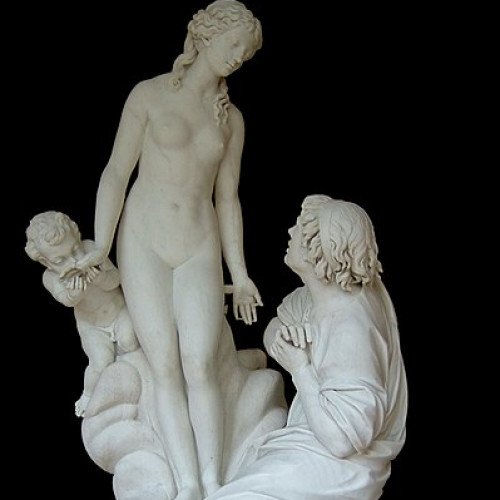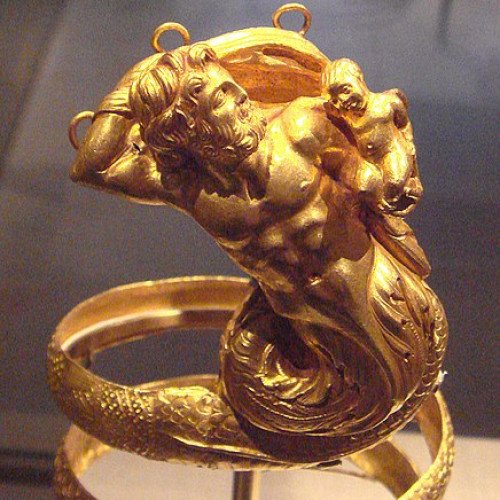Galatea (mythology) VS Triton (mythology)

Galatea (mythology)
Galatea (; Greek: Γαλάτεια; "she who is milk-white") is a name popularly applied to the statue carved of ivory by Pygmalion of Cyprus, which then came to life in Greek mythology. In modern English, the name usually alludes to that story. Galatea is also the name of Polyphemus's object of desire in Theocritus's Idylls VI and XI and is linked with Polyphemus again in the myth of Acis and Galatea in Ovid's Metamorphoses.
Statistics for this Xoptio

Triton (mythology)
Triton (; Greek: Τρίτων Tritōn) is a Greek god of the sea, the son of Poseidon and Amphitrite, god and goddess of the sea respectively. Triton lived with his parents, in a golden palace on the bottom of the sea. Later he was often depicted as having a conch shell he would blow like a trumpet. Triton is usually represented as a merman, with the upper body of a human and the tailed lower body of a fish. At some time during the Greek and Roman era, Triton(s) became a generic term for a merman (mermen) in art and literature. In English literature, Triton is portrayed as the messenger or herald for the god Poseidon. Triton of Lake Tritonis of Ancient Libya is a namesake mythical figure that appeared and aided the Argonauts.